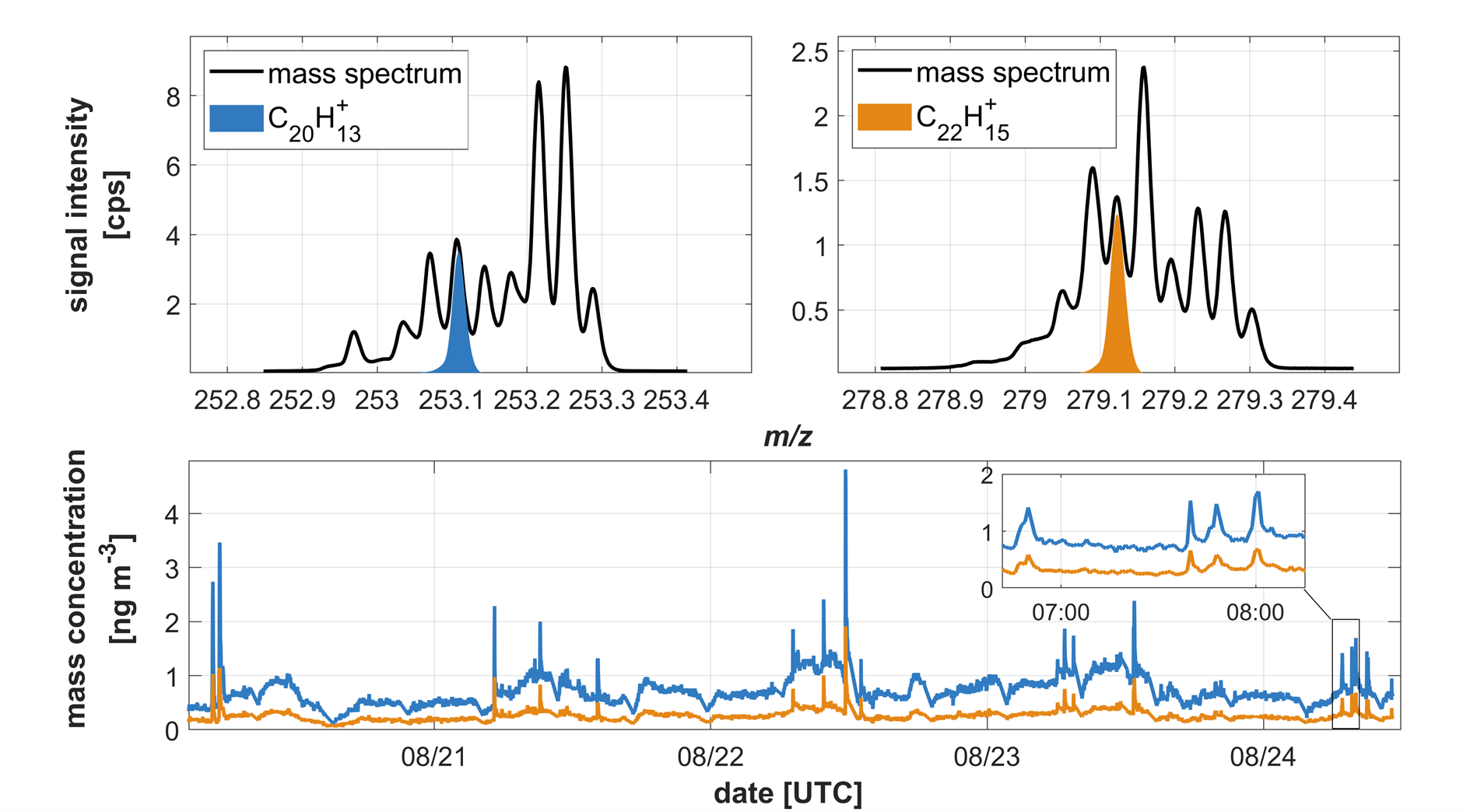Toxic polycyclic aromatic hydrocarbons (PAHs) particles detection.

Image Credit: Ionicon
PAHs are produced by incomplete combustion of organic matters such as, for example, via biomass burning or traffic emissions. PAHs are considered to be harmful even at low concentration levels. Our newest study published in Aerosol Research illustrates the superior analytical performance of the award winning CHARON FUSION PTR-TOF 10k.
The instrument was deployed at the IONICON headquarter in Innsbruck, Austria, to characterize summertime organic aerosol with a focus on detecting toxic polycyclic aromatic hydrocarbons (PAHs) in the particle phase. The high sensitivity (~20 000 cps ppbV-1) and excellent mass resolution (R > 14 000) enabled the separation of the complex mass spectra into more than 4000 ionic signals. Among those thousands of signals, we were able to identify nine chemical compositions that represent a series of PAHs. Mass concentrations of these PAHs range from 0 to 11 ng m-3. Single-minute 3σ limits of detection were found to be between 19 and 46 pg m-3. In addition to this highly precise detection of PAHs, factorization of the entire organic aerosol dataset allowed identifying two major sources of PAHs and one associated physicochemical process.
Learn more and read the study!